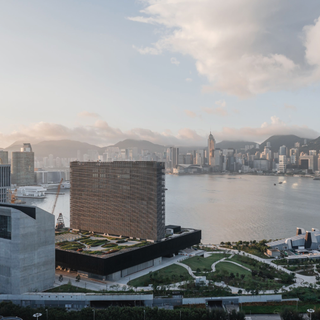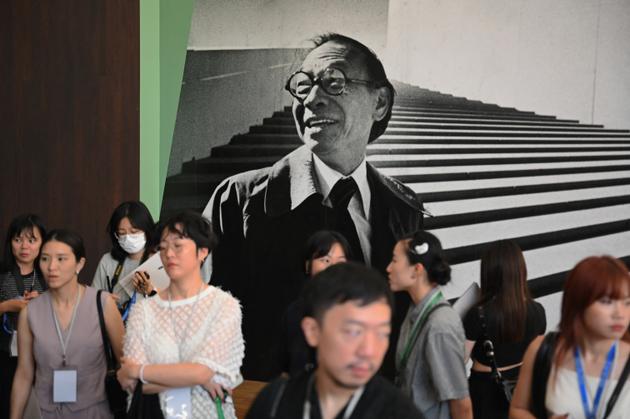


Hong Kong's new cultural district, with flagship M+ museum, offers new perspectives on urbanism
FeatureThe West Kowloon Cultural District, packed with museums and concert halls, features public spaces and gardens that contrast with the city's high-rise urbanism.
All of Hong Kong and beyond seemed to have gathered for the opening of the exhibition dedicated to architect Ieoh Ming Pei (1917-2019), known as "I. M. Pei," at M+ on June 27. In this art museum, which was inaugurated three years ago and sits at the southwestern tip of Kowloon, a district located on the mainland, one could have crossed paths on this evening with architects from mainland China, the US and Japan, European museum directors, bankers, art collectors, diplomats of all stripes and journalists, among others.

It was a sophisticated crowd, one that this establishment is accustomed to welcoming for the launch of its blockbuster exhibitions, but who still contrasted with that of the usually more understated audience for architecture exhibitions. This boded well for attendance: the Hong Kong museum has set itself a minimum target of 330,000 visitors for this exhibition.
"I. M. Pei: Life Is Architecture" is the first major retrospective of the work of this Chinese-American, whose career peaked in the 1980s. The exhibit is aimed primarily at a non-specialist audience: in a visual and playful staging, clearly intended to mitigate the intimidating nature of the discipline, architecture and urban planning are approached from a cultural and social angle. These are placed in tension with the life and personality of the man who was one of the first star architects − he was awarded the Pritzker Prize in 1983. Models and working documents form part of a larger corpus of architectural drawings, extracts from fictional films and TV newsreels, enlarged press clippings and more.
What's most striking is the sheer diversity of the work of this architect, whose status as the head of an international firm, relatively removed from the creative process, had gradually pushed him off the radar. His projects include numerous institutional buildings (Mesa Laboratory, Boulder, Colorado, US, 1967; Dallas City Hall, Texas, 1977; National Gallery of Arts East Building, Washington, 1978; Kennedy Library, Boston, Massachusetts, 1979; Louvre Pyramid, Paris, 1989; Miho Museum, Shiga Prefecture, Japan, 1997; Museum of Islamic Art, Doha, Qatar, 2008), as well as housing projects, shopping malls and office towers.
Reclaimed land
Hong Kong was the ideal location for this attempt at Pei's restauration. In this former British colony, where over-air conditioned shopping malls serve as public spaces, the benefits of an approach that gives pride of place to the natural landscape − even for the most corporate projects, where the relationship to public art and the links between the interior and exterior bear witness to a form of civic spirit − are undoubtedly more salient than elsewhere.
You have 73.74% of this article left to read. The rest is for subscribers only.
